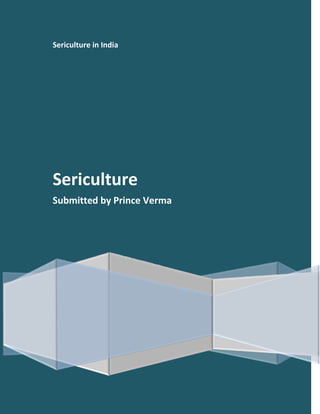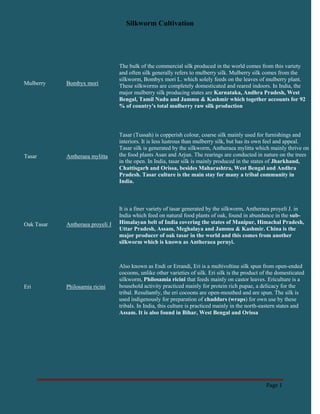Sericulture in India involves the cultivation of mulberry plants as a food source for silkworms to produce silk. Major silk varieties include mulberry silk, tasar silk, oak tasar, eri, and muga silk. Mulberry silk comes from the domesticated Bombyx mori silkworm feeding solely on mulberry leaves. Mulberry is commercially grown using cuttings in nurseries before transplanting. Proper spacing, fertilization, irrigation, and pruning are required for healthy mulberry cultivation to support a thriving sericulture industry in India.












